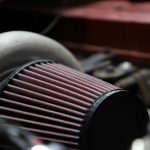Achieving Peak Performance: DIY Guide to Upgrading Your Car’s Exhaust
Upgrading a car’s exhaust system can significantly enhance its performance, providing more power and improving fuel efficiency. To achieve peak performance, one of the most effective ways is to upgrade your car’s exhaust system. This enhancement not only maximizes engine output but also elevates the driving experience with a distinct, richer sound.
Car enthusiasts often overlook the critical role exhaust systems play in vehicle performance. By redirecting and expelling gases more efficiently, a well-designed exhaust can reduce back pressure and improve engine breathing. This transformation allows drivers to experience a noticeable increase in horsepower and torque, enjoying their car’s full potential on the road.
For those eager to start this DIY adventure, understanding the components of an exhaust system is crucial. From headers and downpipes to mufflers and tailpipes, each part plays a pivotal role in performance and sound characteristics. With the right tools and guidance, transforming your vehicle’s exhaust system can be a rewarding project, delivering tangible benefits and a more enjoyable ride.
Understanding Your Car’s Exhaust System
A car’s exhaust system is key to vehicle performance, guiding exhaust gases away from the engine. Proper exhaust flow and balanced backpressure are critical for maintaining efficiency and power.
Components and Function
The exhaust system comprises several key components: the manifold, catalytic converter, muffler, and tailpipe. The manifold collects gases from the engine cylinders and directs them into the exhaust stream. After leaving the manifold, the gases pass through the catalytic converter, which reduces harmful emissions by transforming pollutants into less harmful substances. Next is the muffler, which reduces noise levels by dissipating sound waves. Lastly, the tailpipe expels the filtered gases into the atmosphere. Each part plays a role in maintaining optimal engine performance and ensuring the car operates smoothly. Regular maintenance and checks can prevent issues that might affect vehicle efficiency and power.
Exhaust Flow and Backpressure
Exhaust flow refers to the movement of gases through the exhaust system, while backpressure is the resistance that exhaust gases face as they exit the vehicle. Proper exhaust flow ensures efficient removal of gases, reducing strain on the engine and enhancing performance. Backpressure must be carefully managed; too much can restrict gas flow, diminishing engine output and increasing fuel consumption. Conversely, too little backpressure may lead to an inefficient combustion process. Performance enhancements often focus on maximizing flow and minimizing excessive backpressure. This is essential for maintaining a balance that supports engine power and efficiency, without compromising emissions regulations.
Essentials of Performance Exhaust Systems
Performance exhaust systems are crucial for enhancing a vehicle’s power and efficiency. They improve exhaust flow, increase horsepower, and contribute to a more satisfying driving experience. This section offers insights into the benefits of performance exhausts and how to select the right one for your vehicle.
Benefits of Performance Exhausts
Performance exhaust systems are designed to optimize the expulsion of exhaust gases from the engine. By reducing back pressure and improving airflow, they allow the engine to breathe more easily. This leads to notable improvements in power output and fuel efficiency. Enthusiasts also appreciate the enhanced sound profile, which often gives the vehicle a more aggressive tone without being overly loud.
Reducing weight is another significant advantage. Many performance exhausts use lightweight materials such as stainless steel or titanium, which can help improve the car’s power-to-weight ratio. With lower weight and improved engine efficiency, these systems provide noticeable gains in overall acceleration and throttle response. The combination of functionality and aesthetic appeal makes them popular choices for both enthusiasts and casual drivers alike.



